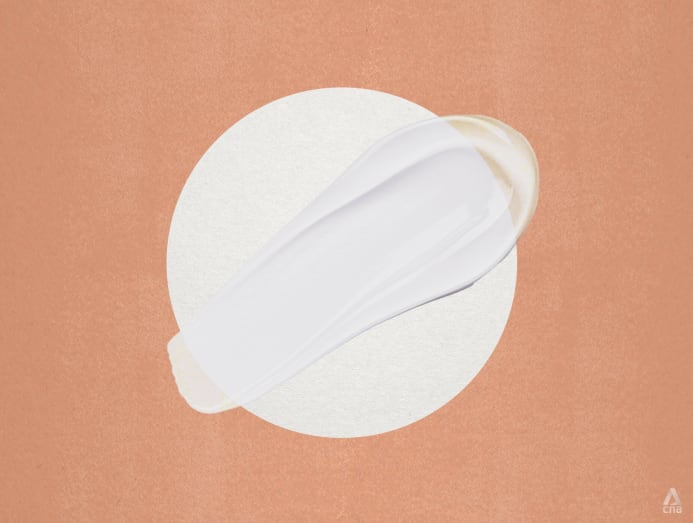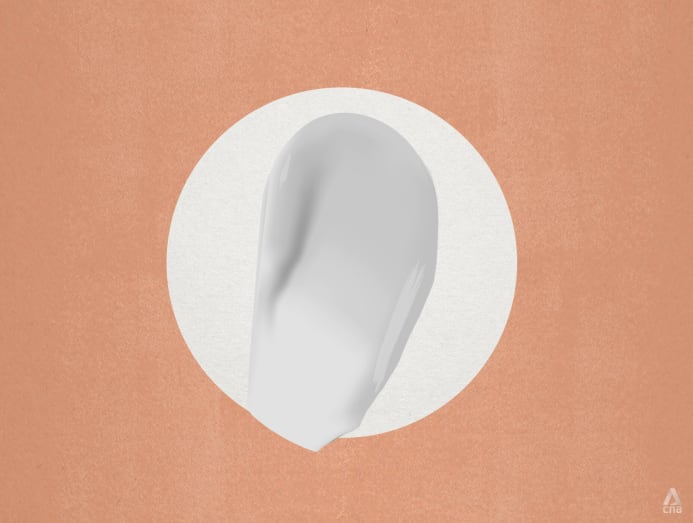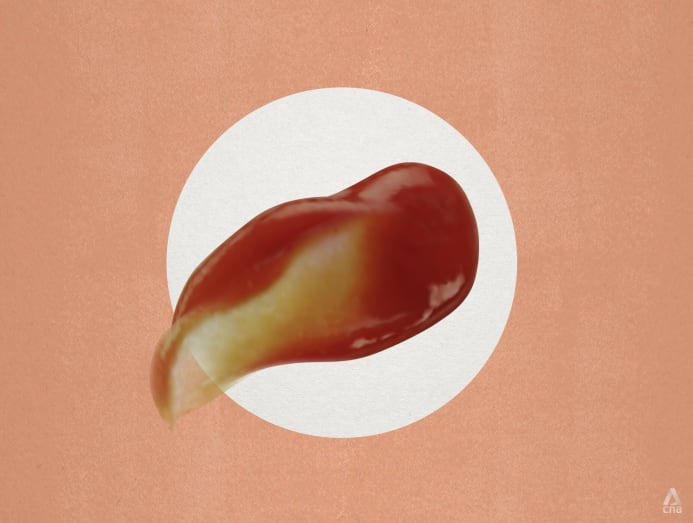Certain changes in vaginal discharge, seen by its colour and texture, can sometimes indicate infections, sexually transmitted diseases, or, in rare cases, cancer. Most changes, however, are a normal part of your menstrual cycle. Here’s what you need to know.

Vaginal discharge is a natural biological function – it does not mean a woman has a sexually transmitted disease. (Art: CNA/Chern Ling)
New: You can now listen to articles.

This audio is generated by an AI tool.
Vaginal discharge is one of those things one simply does not talk about, even to our closest friends, partner or mum.
It is not just that it is private and intimate – some also perceive vaginal discharge to be dirty, unpleasant and indicative of an embarrassing health issue. The first thing that pops to mind for many, is sexually transmitted disease (STD).
This creates stigma around a completely natural biological function. Moreover, the greater problem with this secrecy is that most of us know very little about vaginal discharge, and misinformation abounds. This can delay the diagnosis of genuine health problems.
Here’s the lowdown on vaginal discharge – what’s normal and when should you see a doctor.
4 MISCONCEPTIONS ABOUT VAGINAL DISCHARGE
1. Vaginal discharge or changes to it are symptoms of illness
To set the record straight, vaginal discharge is not only normal, it is an important part of the female reproductive system.
“It is a fluid that is produced from the uterus, cervix and vagina. It is made up of cells and healthy bacteria that help to lubricate the vagina and fight against minor infections,” said Dr Anthony Siow, obstetrician and gynaecologist at Gleneagles Hospital.
2. Normal discharge should not smell
Dr Siow said that normal vaginal discharge may have a faint musty smell and may even leave a grey-yellow stain on underwear.
However, it should not be foul-smelling or have a fishy odour, said Dr Wee Wei-Wei, also an obstetrician and gynaecologist at Gleneagles Hospital.
It should also not be abnormal in colour, excessive in quantity, and accompanied by symptoms such as itchiness, she added. Some abnormal colours include green, grey, brown or pink.
Other signs to look out for are abdominal pain, fever or spotting and bleeding that is out of sync with the menstrual cycle, added Dr Jeslyn Wong from the Division of Gynaecologic Oncology, Department of Obstetrics and Gynaecology, at the National University Hospital.
3. Abnormal discharge is a sign of a sexually transmitted disease
 (Art: Chern Ling)
(Art: Chern Ling)
Dr Wee said: “There are many causes of abnormal vaginal discharge. They are not necessarily due to STDs.”
The doctor recounted how she treated a young woman with abnormal vaginal discharge who worried that she had caught an STD from her new partner when she actually had a fungal infection.
4. Consulting a doctor is extremely unpleasant
Many women hesitate to see a doctor because they think the physical examination is too invasive – it is often done with a speculum, a duck-bill-shaped medical device that allows your doctor to gently open the vaginal walls to examine the inside of the vagina.
Dr Wee reassured women that the physical examination “should not be too uncomfortable if done professionally and if you are relaxed during the examination”.
Others may be embarrassed to share their symptoms, concerns and medical and sexual history with their doctor. In such cases, it might help to jot your concerns down or ask a trusted friend to accompany you for support.
5 TIPS FOR BETTER VAGINAL HEALTH
 (Art: Chern Ling)
(Art: Chern Ling)
1. Wipe from front to back
“When cleaning up after a pee or poo, wipe from front to back. Use the tissue only once and discard,” said Dr Wee. Wiping from back to front may transfer bacteria from the rectum to the vagina and urethra (urine tube), increasing the risk of bacterial vaginosis, yeast infection and urinary tract infection (UTI).
2. Wash, don't touch
 (Art: Chern Ling)
(Art: Chern Ling)
“Wash the skin around the vagina with warm water and mild non-perfumed soap – some women may be sensitive to perfumed soap or shower gel. There is no need to use feminine wash,” said Dr Wee.
Avoid douching, which is cleaning the inside of the vagina with water or other products. Said Dr Wong: “Douching disrupts the balance of normal vaginal flora of microorganisms. This imbalance can lead to an overgrowth of certain bacterial and fungal strains in the vagina, leading to increased discharge and itching.”
3. Practise good post-intercourse habits
“After sexual intercourse, pee once, and wash the perineum (the area between the vagina and anus),” said Dr Wee. Peeing flushes out any bacteria that may have been introduced into the urethra, reducing the risk of UTI.
4. Stay dry
 (Art: Chern Ling)
(Art: Chern Ling)
Your underwear matters. “Wear cotton underwear rather than polyester, and avoid tight-fitting clothing, especially during sleep,” said Dr Siow. This enhances air circulation and prevents moisture buildup.
“Change out of damp underwear after a workout and avoid wearing a damp swimsuit all day. During menstruation, change your tampon or pad four to five times a day,” he added. A warm and moist environment supports the growth of bacteria, fungi and yeast.
5. Add probiotics to your diet
 (Art: Chern Ling)
(Art: Chern Ling)
“Consume vaginal and bladder probiotics to maintain a healthy colony of ‘good’ lactobacillus (bacteria) to fight off minor infection,” suggested Dr Siow. These can be bought off the shelves at a pharmacy.
You could also add food high in probiotics, such as yoghurt, cheese and yoghurt drinks like Yakult to your diet, said Dr Wee.
Dr Siow also added that it is good to avoid ultra-processed food rich in sugar, particularly before menstruation, to reduce the risk of yeast infection.
5 TYPES OF VAGINAL DISCHARGE TO RECOGNISE
1. Normal discharge
 (Art: Chern Ling)
(Art: Chern Ling)
Looks like: Water, lotion or raw-egg whites – white or off-white, and either watery, sticky, thick or pasty
“The consistency, colour, smell, and amount may vary between individuals, throughout different stages of the menstrual cycle, and with age,” Dr Wong said.
It may become wet and clear during ovulation; it is typically thin, clear or milky during pregnancy; and the amount of vaginal discharge may decrease after menopause, she said.
These changes are the result of hormonal fluctuations and are not indicative of health problems.
 (Art: Chern Ling)
(Art: Chern Ling)
Looks like: Scrambled egg whites – thick, white and clumpy
Discharge is often accompanied by redness, swelling and itching around the vagina, and a burning sensation during urination or sex.
Yeast infection is common. It affects 75 per cent of women at some point in their lives, said Dr Siow. It is caused by the overgrowth of a type of fungus that usually exists in small amounts in the vagina.
Poor hygiene habits and sexual activity can disrupt the vaginal balance, leading to an overgrowth of yeast. Hormonal fluctuations due to pregnancy, menopause, or birth control use, along with unmanaged diabetes or a weakened immune system, can also elevate the risk.
It is primarily treated with antifungal medicine, not antibiotics. In fact, antibiotics may increase the risk by “killing off normal protective bacteria in the vagina, leading to an overgrowth of yeast”, said Dr Wong.
The good news is that yeast infection from antibiotic use is usually self-limiting, and may resolve on its own without treatment, she added. However, do seek treatment if the infection is severe or persists.
3. Bacterial vaginosisis (BV)
 (Art: Chern Ling)
(Art: Chern Ling)
Looks like: Spoilt milk – grey, white or green, and has a foul or fishy odour
BV is the most common vaginal infection in women of reproductive age and is reported to affect 20 to 30 per cent of women in Singapore, said Dr Siow.
“It occurs when the normal balance of bacteria in the vagina is disrupted, leading to an overgrowth of harmful bacteria,” he explained.
The discharge is usually accompanied by itching and a burning sensation during urination.
Some factors that increase the risk of BV include new or multiple sexual partners and unprotected sex; douching; hormonal changes during pregnancy, menstruation and menopause; smoking; the use of antibiotics, which disrupts the balance of good and bad bacteria in the vagina.
It is typically treated with antibiotics. Left untreated, BV can lead to pelvic inflammatory disease (which may cause chronic pelvic pain), infertility, and increased risk of ectopic pregnancy (pregnancy outside the uterus).
4. Sexually transmitted infection (STI)
 (Art: Chern Ling)
(Art: Chern Ling)
Looks like: Pus, frothy soapy water, bloody fluid
If the discharge is yellow, green, greyish, pus-like, frothy, bubbly, or bloody, it could indicate STIs like chlamydia, gonorrhoea, trichomoniasis, herpes, or syphilis.
Symptoms may include painful urination, pelvic discomfort, bleeding between periods, a fishy odour, itching, discomfort during sex, and sores on the genital area, anus, mouth or throat.
While different STIs are treated differently, Dr Wong noted that timely treatment is important to minimise damage to the reproductive tract and reduce the risk of infertility.
5. Cancer
 (Art: Chern Ling)
(Art: Chern Ling)
Looks like: Pinkish, brown, blood-streaked or pus-like
Cancers of the genital tract, such as the cervix and the uterus, are usually associated with abnormal vaginal bleeding, said Dr Wong.
“These can appear as vaginal bleeding that is not in sync with the menstrual cycle, which can range from days to weeks. It may also vary from light spotting to heavy vaginal bleeding,” she added.
While vaginal bleeding does not necessary mean cancer – there are other benign causes, such as polyps – it is important to see a doctor so that any potential cancers can be treated at an early stage.
CNA Women is a section on CNA Lifestyle that seeks to inform, empower and inspire the modern woman. If you have women-related news, issues and ideas to share with us, email CNAWomen [at] mediacorp.com.sg.



















































.png?itok=erLSagvf)
